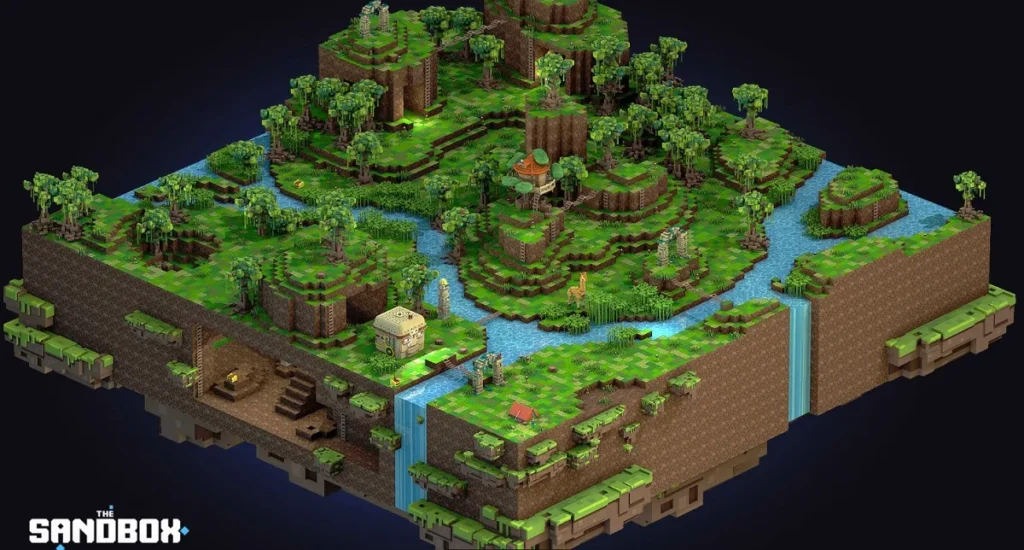
Imagine owning a piece of property that you can’t touch, feel, or even visit in the traditional sense. Welcome to the world of virtual real estate, a concept that might have seemed like pure science fiction a few years ago. Yet, here we are, witnessing a surge in interest and investment in digital lands within the metaverse. The catalyst? A record-shattering $2.4 million purchase of virtual property, marking a pivotal moment in the evolution of digital real estate. This transaction isn’t just a one-off; it’s a clear signal that virtual real estate is becoming a serious playfield for investors. But what does investing in a non-tangible asset like this actually entail? And more importantly, why are people willing to invest millions into what essentially amounts to bits and bytes?
The Concept of the Metaverse: Exploring Digital Universes
To understand the allure of virtual real estate, we first need to dive into the concept of the metaverse. Contrary to what some might think, the metaverse isn’t a single digital space or game but a collective term for interconnected virtual worlds where users can interact in real time. These digital universes blend aspects of social media, online gaming, and cryptocurrencies, creating a rich tapestry of virtual experiences. In the metaverse, you’re not just a passive observer; you’re an active participant, navigating these worlds with an avatar that represents you.
The metaverse is built on the foundation of software that allows for real-time interaction, not just between users but also between users and the virtual environment itself. Cryptocurrency plays a pivotal role here, serving as the currency of choice for transactions within these digital domains. Imagine attending a concert by a global superstar, showcasing your collection of rare digital art, or simply hanging out with friends from around the globe—all within the confines of the metaverse. It’s a concept that’s as fascinating as it is complex, offering a glimpse into what the future of digital interaction might look like.

The Appeal of Virtual Real Estate: More Than Just Pixels
So, why are people investing in virtual real estate? At its core, investment in the metaverse is driven by speculation—the belief that the value of digital land will continue to rise as these virtual worlds gain popularity. However, there’s more to it than just speculation. Virtual real estate also offers the potential for rental income and usage fees, similar to real-world property. Location plays a crucial role in this digital marketplace, just as it does in the physical world. Prime virtual locations within popular metaverses can become hotspots for advertising, social gatherings, and commerce, driving up their value.
Investing in virtual real estate offers a unique dual nature: on one hand, it’s about buying digital land with the hope of selling it for a profit as the metaverse grows; on the other hand, it’s about generating ongoing income through creative uses of that land. Whether it’s hosting virtual events, leasing space to digital retailers, or creating immersive experiences for other users, the possibilities are as limitless as the imagination of the investors and creators.
Major Players and Platforms: Decentraland and Sandbox
When it comes to virtual real estate, two platforms stand out: Decentraland and Sandbox. Both have become synonymous with the metaverse real estate market, offering unique opportunities and challenges for investors. Decentraland is often celebrated for its vibrant community and diverse range of experiences, from art galleries and concerts to games and social hubs. Sandbox, on the other hand, emphasizes user-generated content and game creation, allowing investors and creators to craft their own digital experiences.
What sets these platforms apart from the physical world is the scarcity of digital land. Decentraland, for instance, caps its land parcels, creating a finite supply in a potentially infinite digital universe. This scarcity is a fundamental aspect of the platform’s economy, driving competition and, by extension, value for the land. Sandbox offers a similar model, with a limited number of land parcels that users can buy, sell, or develop. This limitation mirrors the real-world dynamic of supply and demand, reinforcing the value of strategic investment in these digital landscapes.
In the burgeoning world of virtual real estate, the question isn’t just about whether to invest, but where and how to invest. With platforms like Decentraland and Sandbox leading the charge, the landscape is ripe with opportunities for those willing to navigate the complexities of this digital frontier. However, as with any investment, virtual real estate comes with its own set of risks and uncertainties. The key to success lies in understanding these platforms, the nature of the metaverse, and the speculative dynamics at play.

Challenges and Considerations
Diving into virtual real estate comes with its own set of challenges and considerations, not least of which is the speculative nature of the investment. Much like the early days of cryptocurrency, the current virtual real estate market is highly volatile, with returns primarily coming from flipping digital properties at higher prices. This speculative bubble poses risks, as values are driven more by market sentiment than by intrinsic, sustainable income streams.
Moreover, the concept of virtual real estate as a cash-flowing asset remains largely theoretical. Unlike physical properties, which can generate rent, the income potential from virtual properties is still unproven on a large scale. While there are stories of successful rentals and commercial ventures within these digital domains, they are the exception rather than the rule.
Another significant challenge is the fluid nature of demand in virtual spaces. The digital world is ever-changing, with new platforms and technologies constantly emerging. This makes it difficult to predict which metaverse platforms will stand the test of time and continue to attract users—and by extension, where the real estate within them will remain valuable. The uncertainty surrounding the longevity and popularity of these platforms adds another layer of risk to the investment.
Personal Perspective and Analysis
As someone observing the rapid evolution of the metaverse and its burgeoning real estate market, I maintain a cautious stance on diving headfirst into virtual property investment. While the potential for growth and innovation within these digital realms is undeniable, the market’s current speculative nature warrants a careful approach.
The metaverse represents the next frontier in digital interaction, blending elements of social media, gaming, and virtual reality in ways we’re only beginning to understand. Its potential to revolutionize how we connect, work, and play is immense. However, for virtual real estate to become a viable investment avenue, clear, sustainable income-generating models need to be established. These models should not only provide value to investors but also enhance the user experience, driving demand and engagement within the virtual world.
The Future Outlook
The long-term potential of the metaverse and virtual real estate is a topic ripe with speculation and excitement. As technology continues to advance, the lines between the virtual and the physical will blur further, potentially opening up new avenues for investment and innovation. Virtual real estate could become a critical component of digital economies, offering unique opportunities for branding, socializing, and commerce.
However, the key to unlocking this potential lies in the development of the metaverse itself. As platforms become more sophisticated, user-friendly, and integrated into our daily lives, the demand for virtual spaces is likely to grow. This, in turn, could provide the stability and sustainability needed for virtual real estate to become a mainstream investment option.
Staying informed about technological advancements and market shifts will be crucial for anyone interested in this space. The metaverse is still in its infancy, and its trajectory is uncertain. By keeping a close eye on developments and being prepared to adapt to the changing landscape, investors can position themselves to take advantage of emerging opportunities.
FAQs
As we delve into the intricate world of virtual real estate, several questions naturally arise. Let’s explore these queries to shed light on this fascinating digital frontier.
What is virtual reality real estate?
Virtual reality real estate refers to digital properties existing within virtual environments or metaverses. These properties, ranging from plots of land to buildings, exist entirely in virtual spaces. Users can interact with these spaces through avatars, engaging in activities such as building structures, hosting events, or even conducting business—all within the confines of a virtual world.
Can you make money with virtual real estate?
Yes, it is possible to make money with virtual real estate, though the market is still in its early stages and can be speculative. Investors can profit through flipping, where they buy virtual properties and sell them at a higher price. Additionally, rental income and usage fees offer revenue streams, such as leasing land for events or advertising. Success in this arena requires a deep understanding of the virtual market dynamics and the specific metaverse platform’s user demand.
What is an example of a virtual real estate?
An example of virtual real estate can be found in platforms like Decentraland or Sandbox. In Decentraland, a virtual property might be a parcel of land in a bustling district where digital art galleries, clubs, or marketplaces thrive. These properties can host various user-generated content and experiences, contributing to the virtual world’s economy.
How do I claim virtual real estate?
Claiming virtual real estate typically involves purchasing digital land through the platform’s marketplace or a third-party site. Transactions are usually conducted in cryptocurrency, and ownership is recorded on a blockchain, ensuring transparency and security. Upon purchase, you gain control over your virtual property, allowing you to develop or utilize it according to the platform’s capabilities and rules.
Why invest in virtual real estate?
Investing in virtual real estate offers a unique opportunity to be part of emerging digital economies within the metaverse. For forward-thinking investors, it represents a chance to capitalize on the growth of virtual worlds, potentially yielding returns through appreciation and income generation. Moreover, it allows investors to experiment with innovative forms of engagement, marketing, and community building.
How is AI used in real estate?
AI is transforming traditional real estate in numerous ways, from enhancing property search engines with more intuitive recommendations to streamlining transactions with smart contracts. In virtual real estate, AI can be used to analyze market trends, predict property values, and even assist in designing virtual spaces. AI-driven chatbots and virtual assistants also improve customer service, offering personalized guidance and support.
Can AI replace real estate agents?
While AI significantly impacts the real estate sector by automating tasks and providing analytical insights, it is unlikely to completely replace real estate agents. The human touch is crucial in negotiation, understanding client needs, and navigating the complexities of real estate transactions. However, agents who leverage AI tools can enhance their services, offering more value to their clients by integrating technological advancements into their practice.
Conclusion
The journey into virtual real estate is fraught with speculation, excitement, and uncertainty. As we stand on the cusp of a new digital era, the possibilities seem endless, yet the risks are palpable. For those considering an investment in the metaverse, caution and due diligence are advisable. The speculative nature of the market, combined with the unproven income potential and the volatility of platform popularity, makes it a challenging investment landscape to navigate.
However, the potential of the metaverse as a new frontier in investment cannot be ignored. As technology evolves and virtual worlds become an increasingly integral part of our lives, the opportunities within these digital realms are likely to grow. For the visionary investor, the key will be to balance the excitement of pioneering a new form of investment with a pragmatic approach to risk and return.
In conclusion, virtual real estate offers a glimpse into a future where digital and physical realities converge. As we explore this uncharted territory, let’s proceed with caution, armed with research and a deep understanding of the market dynamics at play. The digital frontier awaits, and with it, the promise of a new world of investment opportunities.


